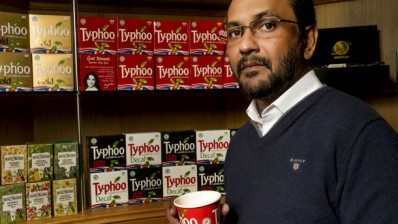Typhoo sees dust levels drop 81%

The company introduced the new system as high dust levels from various tea-blending products had created unfavourable working conditions for employees.
The dust had made it difficult for employees to breathe easily, and had increased the temperature of the factory, Typhoo said. The dust had also migrated to other areas of the factory, it added.
Management decided to take immediate action to protect the health of its employees by renting two small air purification units at a cost of £1,000 a week.
Unsatisfactory
However, according to Typhoo operations manager Danny McGrail, the results were “absolutely unsatisfactory”.
“You can’t put a price on people’s health and, ultimately, we knew we had an issue,” McGrail told Food Manufacture.
Supplier Zehnder Clean Air Solutions tested the air and found “significant spikes” during operational hours, which demonstrated that the blending processes were responsible for the high dust levels.
Typhoo agreed for 13 of the Zehnder air cleaning systems, which extract particulates and then replace with clean air, to be installed in the blending facility.
Dust levels
Dust levels in the tea blending facility were reduced by 81% and, due to improved air circulation, the temperature in the area became more comfortable for employees. Typhoo was also eventually able to cut its additional cleaning time down from 15 hours a week to only five hours a week.
McGrail said that following the success of the system in the blending room the site had already expanded it into the catering area and it was being rolled out across the factory floor. Zehnder Clean Air Solutions area sales manager William Burrows said that indoor air quality was becoming an increasing concern for manufacturers.
“People say just clean up more when the dust has already landed, but by the time it has landed people have already breathed it in,” he said. “We have a worldwide patented system that holds more particulates for longer.”
He highlighted that 50mg per m3 was seen as the guideline for outside air quality, yet some food factories could have as much as 150–300mg per m3 in their air.
- Typhoo Tea boss Somnath Saha spoke to Food Manufacture about his plans to think outside the bag

















